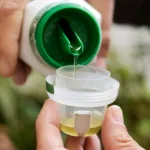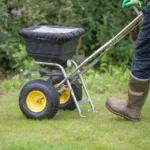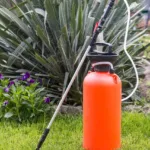We’re spoilt for choice with plant fertilisers in the UK. Even your small local gardening centre probably offers at least a handful of options, which begs the question: what’s the best plant fertiliser to spend your money on?
Here, we’ve shared our top recommended plant feeds to supply essential nutrients, ensure healthy soil, and support plant health and growth, based on our own testing and reviews.
Brand: Miracle-Gro
Price: £
Size: 800ml – 2.5l
Form: Liquid
Intended for: Indoor and outdoor use
Ingredients: Nitrogen, phosphorous, potassium
When to use: March-September
Application frequency: Every 1-2 weeks
Brand: Miracle-Gro
Price: £
Size: 2 kilograms
Form: Water-soluble granular
Intended for: Indoor and outdoor use
Ingredients: Nitrogen, phosphorous, potassium
When to use: March-September
Application frequency: Every 2 weeks
Brand: Baby Bio
Price: £
Size: 175ml
Form: Liquid
Intended for: Indoor use
Ingredients: Nitrogen, phosphorous, potassium
When to use: Year-round
Application frequency: Every 2 weeks
Brand: envii
Price: £
Size: 1-20 litres
Form: Liquid
Intended for: Indoor and outdoor use
Ingredients: Liquid seaweed extract
When to use: Year-round
Application frequency: Every 7 days
Brand: Miracle-Gro
Price: £
Size: 1 kilogram
Form: Liquid
Intended for: Indoor and outdoor use
Ingredients: Nitrogen, phosphorous, potassium
When to use: March-September
Application frequency: 1-3 times per week
Brand: Westland
Price: £
Size: 10 kilograms
Form: Granular
Intended for: Outdoor use
Ingredients: Nitrogen, phosphorous, potassium, calcium
When to use: February-October
Application frequency: Once every 4-6 weeks
Brand: Miracle-Gro
Price: £
Size: 1 kilogram
Form: Liquid
Intended for: Indoor and outdoor use
Ingredients: Nitrogen, phosphorous, potassium
When to use: March-September
Application frequency: N/A
Table of Contents
 Best Plant Fertilisers UK: 2024
Best Plant Fertilisers UK: 2024
Best Overall: Miracle Gro All Purpose Concentrated Liquid Plant Food
Best Granular Fertiliser: Miracle Gro All Purpose Water Soluble Plant Food
Best Fertiliser For Houseplants: Baby Bio 5878844 Houseplant Food
Best Organic Fertiliser: envii SeaFeed Xtra
Best Easy-Application: Miracle Gro Pump & Feed’ All Purpose Plant Food
Best All-Natural Feed: Westland Fish, Blood and Bone All Purpose Plant Food
Best Myco Fertiliser: Mycorrhizal Inoculant by DYNOMYCO
📊 Comparison Chart of Lawn Mowers
Scroll right on mobile to see the whole table chart
| Product Name | Brand | Price (£) | Size | Form | Intended Use | Ingredients | When to Use | Application Frequency |
|---|---|---|---|---|---|---|---|---|
| Miracle-Gro All Purpose Concentrated Liquid Plant Food | Miracle-Gro | 800ml - 2.5l | Liquid | Indoor and outdoor use | Nitrogen, phosphorous, potassium | March-September | Every 1-2 weeks | |
| Miracle-Gro All Purpose Water Soluble Plant Food | Miracle-Gro | 2 kilograms | Water-soluble granular | Indoor and outdoor use | Nitrogen, phosphorous, potassium | March-September | Every 2 weeks | |
| Baby Bio 5878844 Houseplant Food | Baby Bio | 175ml | Liquid | Indoor use | Nitrogen, phosphorous, potassium | Year-round | Every 2 weeks | |
| envii SeaFeed Xtra | envii | 1-20 litres | Liquid | Indoor and outdoor use | Liquid seaweed extract | Year-round | Every 7 days | |
| Miracle-Gro Pump & Feed' All Purpose Plant Food | Miracle-Gro | 1 kilogram | Liquid | Indoor and outdoor use | Nitrogen, phosphorous, potassium | March-September | 1-3 times per week | |
| Westland Fish, Blood and Bone All Purpose Plant Food | Westland | 10 kilograms | Granular | Outdoor use | Nitrogen, phosphorous, potassium, calcium | February-October | Once every 4-6 weeks | |
| Mycorrhizal Inoculant by DYNOMYCO | Miracle-Gro | 1 kilogram | Liquid | Indoor and outdoor use | Nitrogen, phosphorous, potassium | March-September | N/A |
⭐ Reviews – Best Plant Fertilisers of 2024
In our opinion, the best overall plant fertiliser is the Miracle-Gro All Purpose Concentrated Liquid Plant Food. Of all the fertilisers we tested, this one had the fastest and the most obvious results – our plants were noticeably bigger and healthier within two weeks.
Quick Specs:
Brand: Miracle-Gro
Price: £
Size: 800ml – 2.5l
Form: Liquid
Intended for: Indoor and outdoor use
Ingredients: Nitrogen, phosphorous, potassium
When to use: March-September
Application frequency: Every 1-2 weeks
Best For:
Anyone looking for the very best, most reliable plant fertiliser that produces the quickest and most noticeable results at a value for money that can’t be beaten.
What Customers Think:
The Miracle-Gro All Purpose Concentrated Liquid Plant Food is one of the current top three plant fertilisers on Amazon, with a 4.6-star rating out of 5 (from more than 12,000 reviews). Customers said the plant food revived their plants and made a noticeable difference to plant growth. One reviewer said their plants were “thriving” and their containers were “overflowing with blossoms”.
What We Like:
We used the Miracle-Gro plant food on the plants in our raised flower beds and hanging baskets and found the formula easy to use. Even if you’ve never used liquid plant food before, you shouldn’t have any issues following the simple instructions on the back of the bottle. We just added half a cap of the solution to our watering can, then topped it up with 1 litre of water and watered our plants as normal. Our tip: start with less formula if you’re concerned about harming your plants.
The timeframe in which we saw results was the shortest with this Miracle-Gro plant food. Within a week after our first application, our plants had grown noticably. Within two weeks, they’d bloomed new flowers and were thriving.
The 7-3-5 NPK (nitrogen, phosphorous, potassium) ratio is ideal for speedy plant growth. Nitrogen is the key component of the structural proteins in plant leaves and stems, and also plays an important role in photosynthesis, protein synthesis, and more.
A little goes a long way with this concentrated formula. Even the largest 2.5-litre bottle cost less than £15 (at the time of our review), so even using it every 1-2 weeks as recommended, it’s great value and should last for months on end.
What We Don’t Like:
Admittedly, a liquid concentrated feed does take a bit more effort to use and has more potential for issues (e.g. if you don’t dilute the solution as much as needed).
Some customers complained that their bottle was only two-thirds full, although this didn’t seem to be an issue for everyone.
Our top pick for the best granular plant fertiliser is another Miracle-Gro product, this one the Miracle-Gro All Purpose Water Soluble Plant Food. We found that this plant food did exactly what we wanted and more, supplying all the nutrients our plants needed for fast, healthy growth. Plus, as a granular formula, we found it easier to use than our top pick liquid feed.
Quick Specs:
Brand: Miracle-Gro
Price: £
Size: 2 kilograms
Form: Water-soluble granular
Intended for: Indoor and outdoor use
Ingredients: Nitrogen, phosphorous, potassium
When to use: March-September
Application frequency: Every 2 weeks
Best For:
People looking for the very best water-soluble granular fertiliser that’s easy to use and delivers exceptional results for both indoor and outdoor plants.
What Customers Think:
The Miracle-Gro All Purpose Water Soluble Plant Food is currently the best-rated plant food on Amazon, with a 4.7-star rating from more than 12,800 reviews. Customers called the feed an “excellent product” and “highly recommended”, commenting that it “works very well” and “grows super plants”. One customer said that their garden had never looked so good.
What We Like:
It’s hardly surprising that we saw such a dramatic improvement in our plant growth given the Miracle-Gro granular fertiliser’s 24-8-16 NPK ratio. The generous nitrogen concentration encourages speedy shoot and leaf growth and had our plants looking greener and fuller in just under 2 weeks.
Using this water-soluble granular feed couldn’t have been easier. We just mixed a large spoonful (there’s an included measuring spoon inside the box) with 4.5 litres of water and used the solution to water our beds, borders, and hanging plants. The back of the box has instructions for how much formula to use in different situations, including for your houseplants and even your lawn.
Again, value for money is undeniable here. When we got the Miracle-Gro All Purpose Water Soluble Plant Food for testing, the price was just under £14. Given that we were only using one spoonful every two weeks, the 2-kilogram container had plenty to keep us going. The box is easily sealed and contains 4 separate packs to keep the granules fresh.
What We Don’t Like:
The granules stained our skin blue – wear gloves or be careful not to touch them!
Based on our testing, the best plant fertiliser for houseplants is the Baby Bio 5878844 Houseplant Food. Given that this product costs less than £3, we were blown away by the value for money and the quality of the results we achieved. It gave our indoor plants a much-needed boost, and we noticed they looked greener and healthier within just a few weeks.
Quick Specs:
Brand: Baby Bio
Price: £
Size: 175ml
Form: Liquid
Intended for: Indoor use
Ingredients: Nitrogen, phosphorous, potassium
When to use: Year-round
Application frequency: Every 2 weeks
Best For:
Anyone looking for the best plant fertiliser to encourage greener, healthier growth in indoor plants that are looking dull or aren’t thriving.
What Customers Think:
The Baby Bio 5878844 Houseplant Food was the best-reviewed indoor houseplant fertiliser that we found, with a 4.6-star average rating from more than 16,000 reviews. Customers said that the feed was “the best plant food” and an “amazing product”. One reviewer said that the fertiliser was “life-saving for plants” and had rescued her cacti on its last legs.
What We Like:
We preferred having a smaller 175ml bottle that we could store inside a cupboard rather than outdoors in our shed, but given that we only needed to use a few drops at a time, we anticipated that we’d still get months of use out of the single bottle of formula, making it great value for money.
The Baby Bio 5878844 Houseplant Food did just the trick when it came to supporting our houseplant growth. It contains a blend of potassium, nitrogen, and phosphorous, which support various aspects of plant development, including leaf formation, root growth, and flowering. Adding these nutrients to soil is especially important for houseplants because once the nutrients are depleted, they can’t re-enter the soil – which is why untended-to houseplants often look dull, droopy, and sad.
We found the use instructions easy to follow. There are a couple of different recommendations for different situations, but we chose to mix 5 drops with half a litre of water every time we watered, and this worked well for us.
What We Don’t Like:
We struggled to open the bottle on our first use (we resolved the issue by placing the bottle upside down in hot water to soften the lid).
If you would prefer to use an organic plant fertiliser, we think the envii SeaFeed Xtra can’t be beaten in this category. It’s a seaweed-based fertiliser that acts as a multipurpose plant food, with amino acids and extra iron that help to naturally support the healthy growth of garden plants.
Quick Specs:
Brand: envii
Price: £
Size: 1-20 litres
Form: Liquid
Intended for: Indoor and outdoor use
Ingredients: Liquid seaweed extract
When to use: Year-round
Application frequency: Every 7 days
Best For:
Folks who prefer organic fertilisers and are looking for the best product available to provide natural growth benefits to a variety of plants.
What Customers Think:
The envii SeaFeed Xtra has a 4.6-star average rating from more than 5,300 reviews. Customers said that the fertiliser “works a treat” and gives “great visible results”. One reviewer called it “amazing stuff, like steroids for grass and plants”.
What We Like:
Unlike synthetic fertilisers, the envii SeaFeed Xtra isn’t super high in nitrogen, phosphorus, and potassium. Instead, it contains a high percentage of seaweed, which is rich in humic acids, micro and macronutrients, and phytohormones – all ideal for soil fertility. Plus, it contains added iron and amino acids, which gives plants a greener colour and encourages photosynthesis (essential for plant growth).
Due to its organic, natural status, this feed is also better for the environment and gives plants the boost they need without any potentially harmful chemicals.
We were a little skeptical about using an organic fertiliser because we weren’t sure we’d get the same good results as with one of our top two synthetic picks, but we saw a visible improvement to our plants after using this feed for just over a month. Our plants grew bigger leaves and looked thicker and greener, which was all the proof we needed of this formula’s efficacy.
The method of using the bottle threw us off at first, but it’s actually easy once you know what you’re doing. With the bottle upright, we opened the cap and squeezed gently until the right volume of fertiliser had been measured out in the compartment in the bottle neck. We could then pour out the measure-out solution into our watering can (only the solution in the bottle neck leaves the bottle).
What We Don’t Like:
It took a bit longer to see results than with the synthetic fertilisers we’d tested.
We know that some people don’t want the hassle of measuring out a concentrated formula and mixing it with water, and the Miracle-Gro Pump & Feed’ All Purpose Plant Food is our top recommended plant food for easy application. It’s a pump bottle with a solution that can be applied straight on your plant, with no time-wasting, no messing around, and no chance of getting measurements wrong.
Quick Specs:
Brand: Miracle-Gro
Price: £
Size: 1 kilogram
Form: Liquid
Intended for: Indoor and outdoor use
Ingredients: Nitrogen, phosphorous, potassium
When to use: March-September
Application frequency: 1-3 times per week
Best For:
People who want the easiest-use solution to feed plants with no prior measuring or diluting required.
What Customers Think:
More than 4,000 reviewers rated the Miracle-Gro Pump & Feed’ All Purpose Plant Food 4.5 stars out of 5. Customers said that the feed was “very good stuff”, “great for household plants”, and “easy to use”. A few commented that with regular use, they got through the bottle very quickly.
What We Like:
For us, the biggest selling point of the Miracle-Gro Pump & Feed’ All Purpose Plant Food was that it was a ready-mixed formula that we could pump straight onto our plants. This was definitely the easiest-to-use fertiliser that we tried – we just pumped a penny-sized amount of feed onto the soil beneath the plant (being careful not to touch the actual plant itself), then watered as normal.
Again, we can’t complain about price. The single 200ml bottle cost just under £6 at the time of our review. If you only have a couple of pot plants that you want to keep healthy, the bottle (which is about the size of a soap bottle) should last for 3-6 months on average.
We saw the same plant growth with this pre-mixed formula as we did with the concentrated formulas. Our medium-sized pot plants were healthy, happy, and thriving after just a few weeks of using the solution twice a week.
What We Don’t Like:
Because the solution is pre-mixed and not a concentrated formula, it doesn’t last as long as the other fertilisers on this list.
We were unsure how to use the pump at first – it has a clear plastic cover that needs to be removed first.
If you want to keep things as natural as possible with your fertiliser choices, we highly recommend the Westland Fish, Blood and Bone All Purpose Plant Food. This naturally sourced feed is naturally high in potassium, nitrogen, and phosphorous – the winning combination for lush, green plant growth. It’s also a natural source of calcium, which plants need for growth and development (like humans!).
Quick Specs:
Brand: Westland
Price: £
Size: 10 kilograms
Form: Granular
Intended for: Outdoor use
Ingredients: Nitrogen, phosphorous, potassium, calcium
When to use: February-October
Application frequency: Once every 4-6 weeks
Best For:
Anyone who wants the benefits of a gradual, slow-release plant fertiliser that’s naturally derived and minimally processed to maintain its natural form.
What Customers Think:
More than 2,000 customers awarded the Westland Fish, Blood and Bone All Purpose Plant Food 4.5 stars on Amazon, commenting that it’s “easy to use”, “does what it says on the box”, and is a “highly effective traditional fertiliser”. We read reviews from customers who had seen success when using the fertiliser on their flowers, trees and hedges, and fruit and vegetable garden.
What We Like:
We appreciated having the option of an all-natural fertiliser with ingredients that naturally increased plant growth thanks to its natural nitrogen, potassium and phosphorous content. We were pleased with the results we achieved after feeding our soil with this fertiliser just once.
We found the instructions for using the feed easy: We just applied a handful (around 35 grams) of the formula to the soil beneath our outdoor plants every 4-6 weeks as advised. We mixed it with the top layer of soil to make sure it was well incorporated. Unlike with some synthetic fertilisers, there seemed to be a lower risk of damaging plants due to accidental overuse.
You get a massive 10-kilogram box for around £23, which is great value. Given that the recommended application frequency is every 4-6 weeks, one box should last 6-12 months depending on how many plants you use the feed for.
What We Don’t Like:
We couldn’t find instructions specifically warning against using the formula on indoor plants, but we wouldn’t personally use it indoors – it has a nasty smell (as you might expect given the ingredients!).
It’s in powder, not pellet, form, which makes it a little trickier to measure and use.
During our testing, we also tried a few myco fertilisers with unique formulations that promised to encourage healthy plant growth with new techniques, and the Mycorrhizal Inoculant by DYNOMYCO was our favourite fertiliser in this category. It’s a concentrated formula of fungal strains that develop “symbiotic relationships” with plant roots, essentially improving the plant’s ability to cope with stress and improving its uptake of minerals from the soil.
Quick Specs:
Brand: Miracle-Gro
Price: £
Size: 1 kilogram
Form: Liquid
Intended for: Indoor and outdoor use
Ingredients: Nitrogen, phosphorous, potassium
When to use: March-September
Application frequency: N/A
Best For:
Anyone who’s propagating or transplanting plants, or growing new plants from seed, and wants the most effective treatment solution to encourage fast root and shoot growth from the very beginning.
What Customers Think:
The Mycorrhizal Inoculant by DYNOMYCO met or exceeded most customers’ expectations, with a 4.6-star rating on Amazon. Customers said the fertiliser was “magic”, “easy to use”, and a “useful aid to growing”. Most people used the fertiliser when planting new plants or propagating plant cuttings.
What We Like:
Healthy overall plant growth starts at the roots, and the Mycorrhizal Inoculant fertiliser uses a strain of fungi called Glomus intraradices, which have been proven to help improve the absorbency of phosphorous and other micro- and macro-nutrients. What does that mean for your plants? Increased growth rate and fertility, better durability under stress, and a reduced need for other fertilisers.
Despite the relatively complex nature of this fertiliser, we found it easy to use: we just followed the instructions to incorporate the product into our growing mixture for our plants, then watered as normal.
We used the Mycorrhizal Inoculant fertiliser when planting new tomato plant seeds and found that the plants grew almost twice as fast as the seeds that we’d simply watered after planting. We had sprouts in three days – results that exceeded our expectations.
What We Don’t Like:
You don’t get a lot in the bag for what you pay. 100 grams only provides enough mixture for 20 plants. You can upgrade to the 200, 340, or 750-gram bags, but the price gets pretty steep, fast – the biggest bag costs over £50.
This isn’t intended as a long-term fertiliser, but more of something to use when propagating or transplanting plants, growing new seedlings, and so on. We still recommend investing in an additional fertiliser for your plants once they’ve become established.
🌱 Why Do You Need A Plant Fertiliser?
You might be wondering whether a plant fertiliser is essential, or simply a good supplement for plant health.
From our research and our own experience as novice gardeners, our conclusion is that fertilisers aren’t necessary for plant growth in most situations – but they have been proven time and time again to improve plant growth, yield, and quality, as discussed in this 2021 review of various studies on tomato plant growth. What does that mean? Your plants should still grow without fertiliser (as long as they have access to good soil, sunlight, and water), but fertiliser helps them to grow faster, greener, and healthier. That should lead to better outcomes, which, depending on the plant, could mean:
More blooms on flowering plants
Bigger fruits or vegetables on edible plants
Greener leaves, and bigger, faster growth in general
When it comes to indoor plants, however, it’s a little different. Most houseplants have limited access to sunlight and are only sustained by the limited nutrients in your potting soil (which are a finite resource), so fertiliser helps to top up the soil’s depleted nutrients and give your plants what they need to grow healthily, avoiding nutrient deficiencies.
Whether you have a sad, droopy plant that needs to be revitalized, or you just want to keep your plants growing as healthily as possible, a fertiliser can provide the essential plant nutrients needed to achieve your goals.
📝 3 Features To Look For In The Best Plant Fertiliser In The UK
When shopping for the best fertilisers for your plants, look out for the following three features:
💰 Great Value For Money
First, your chosen fertiliser should be a great value for money based on the benefits and features it offers.
Value for money is essentially how much value you get for the price you pay. When determining the value for money offered by a fertiliser product, consider the following things:
The application rate
The size and frequency of the application
The effectiveness of the formula
Whether the product is concentrated (and can be diluted with or dissolved in water) or pre-mixed
The product price
Most of this information can be found in the product description or on the back of the product bottle. To learn about the formula’s effectiveness, our advice is to read impartial third-party reviews like these, as well as customer reviews below the product listing. Seek out before-and-after photos, since these will show you exactly what difference a plant fertiliser has made to the customer’s plants.
Essentially, the greater the volume of fertiliser and the longer it lasts with regular applications, while still showcasing effective, desirable results, the better its value for money.
But that doesn’t necessarily mean you should go out and buy the biggest batch of plant fertiliser even if that is the best-value option. If you only have a small pot plant you want to keep alive, you may as well spend less on a smaller bottle.
⚗️ Good Source of Nutrients
Also make sure that your chosen fertiliser provides a good source of nutrients, since this is essentially the whole point of plant feed. In most cases, a plant fertiliser should provide nitrogen, phosphorous, and potassium. Some organic feeds, like seaweed fertilisers, contain trace elements, amino acids, and iron, which have similar benefits and help to support leaf, shoot, and root development.
The ratio of nutrients (known as the NPK ratio) you’re looking for should depend on your intended outcomes. Most gardeners go for a plant feed that has a high nitrogen content, since nitrogen plays a central role in plant growth and development.
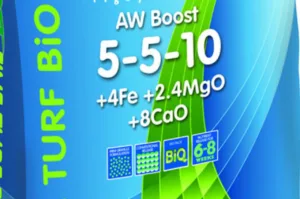
😊 Easy To Use
Regardless of whether you consider yourself a gardening expert or you’re just trying to keep your first pot plant alive, your fertiliser of choice should be easy to use.
Depending on the type of fertiliser you go for, you might need to dilute it in water before use, or it might be pre-mixed. Or, you might be able to apply it straight to the soil. Look for fertilisers with caps, scoops, or pumps that make it easy to measure out and distribute the formula with minimal hassle or mess.
🧾 6 Things To Consider When Choosing The Best Plant Feed
As well as looking for the top three features of the best plant feeds, make sure to also consider the following factors when choosing between the different options:
💸 Your Budget
Start by determining how much you want to spend on a plant fertiliser.
The good news is that plant feeds are generally very affordable, costing within £10 – often less than £5. The cost of your chosen feed largely depends on the bottle or tub size, and the number of uses you should get out of the formula.
If you plan to use fertiliser on your plants year-round, your annual cost could be anything from £15 to £65, depending on the scope of your project and how often you use the feed.
🟢 Your Application Area
Also consider your application area, or the number and size of the plants you plan to fertilise. This will determine the volume or quantity of plant feed that you buy.
Most plant feeds are available in multiple bottle or tub sizes, and the larger tubs/bottles are generally a better value for money because the price per litre or kilogram is lower. So, if you want to fertilise all the plants in your garden, it’s best going for a bigger product, or buying multiple bottles or tubs upfront, so you have enough for your project.

➗ Application Rate & Frequency
Make sure you’re aware of the manufacturer’s application recommendations before spending your money on a fertiliser for your plants.
Most plant fertilisers should be applied every 1-4 weeks (the exact application frequency should be noted on the back of the bottle).
It’s fine to only use a fertiliser once, or occasionally throughout the year – this won’t harm your plants. But you’ll get better and more noticeable results if you follow the manufacturer’s application guidelines.
The effects of most plant fertilisers wear off after a few weeks, which is why repeated applications are best if you want to see continued improved plant growth. But be wary of over-application – this could cause your plants to become stressed due to over-exposure to nutrients. As with most things in life, there is such thing as too much of a good thing!
🏠 Indoor Vs Outdoor Use
Do you want a plant fertiliser for indoor plants, outdoor plants, or both? That’s another question to ask yourself when choosing the right plant feed for you.
Many plant fertilisers can be used both indoors and outdoors. However, for indoor plants, we recommend searching for plant feed that’s specially formulated for houseplants, like our top-pick Baby Bio Houseplant Food. It’s best to feed indoor plants with a dedicated fertiliser that can cater to their unique needs, taking their environmental factors into account.
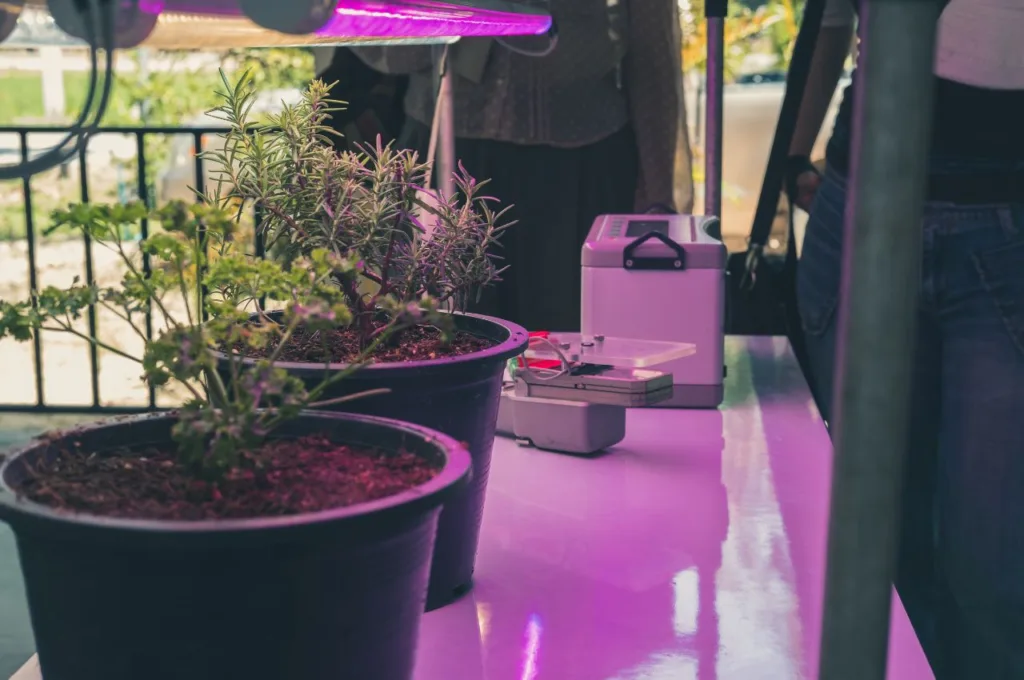
🧬 Organic Vs Synthetic Fertiliser
Another consideration to make is whether you’d prefer an organic or synthetic fertiliser for your plants.
Organic fertilisers are derived from natural materials, like seaweed, animal manure, and plant residues. They release nutrients gradually as they decompose, enriching the soil and improving its structure. They also enhance microbial activity and promote long-term soil health.
Synthetic fertilisers are manufactured – meaning they don’t come from a natural source – and contain nutrients in a concentrated form. They provide a quick nutrient boost to plants and give you better control over nutrient ratios. However, they typically lack the organic matter and microbial benefits that organic fertilizers offer.
There’s no better option between organic and synthetic fertilisers – your choice between the two depends on your gardening goals and environmental concerns. Organic options are more sustainable and improve soil quality, while synthetic feeds can provide rapid, targeted nutrient delivery but are more dangerous to plant health if you overuse them.
🚿 Liquid Fertiliser Vs Granular Fertiliser
Finally, consider whether you’d rather use a liquid fertiliser or a granular feed for your plants.
Liquid fertilisers are usually sold in bottles and can be easily applied using your watering can. They’re either concentrated and need diluting in water or pre-mixed and ready to apply. Generally, liquid feeds are quickly absorbed by plant roots, providing a fast nutrient boost.
Granular fertilisers tend to be slow-release options that are applied by spreading them on the soil’s surface. Some need to be dissolved in water, so make sure to check the instructions on the box before you buy. These fertilisers gradually release nutrients as they break down, providing a longer-lasting supply to plants.
As with organic vs synthetic feeds, your choice between liquid and granular fertilisers depends on your personal preferences. While liquid fertilisers offer rapid results and are useful for immediate nutrient correction, granular fertilizers are a great choice for extended feeding and can usually be applied less frequently.
🏁 Final Word
We produced this review and buyer’s guide because we wanted to help UK gardeners find the best plant fertilisers currently available based on our own research, customer feedback, and our in-house testing. Hopefully, this guide helped you to decide on the best plant feed for your situation. Happy shopping!
Important note: this review was last updated in October 2024. We apologise if pricing or availability has since changed for any of the products mentioned above.








